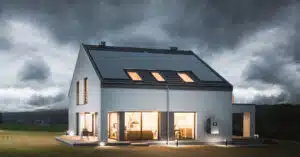In the renewable energy landscape, virtual power plants (VPPs) and demand response programs (DR) are transforming how electricity is managed and distributed. While they share common goals of optimizing energy use and enhancing grid stability, they operate in distinctly different ways.
 What is a Virtual Power Plant?
What is a Virtual Power Plant?
Virtual power plants don’t rely on a single source of power generation. Instead, it operates by networking a multitude of distributed energy resources (DERs) like solar panels, wind turbines, and battery storage systems, which are coordinated via software to function as a single power plant. VPPs can supply power to the grid during peak times, enhancing the grid’s efficiency and stability. This networked approach allows for greater flexibility and scalability, adapting to changes in energy demand without the extensive infrastructure required for traditional power plants.
What are Demand Response Programs?
Demand response (DR) is a system where utility companies communicate with consumers to reduce or shift their electricity usage during peak demand periods. This interaction helps balance the grid and prevents overloads. Consumers participating in DR programs often benefit from reduced utility bills or other incentives. The primary goal of demand response programs are to actively manage consumer loads to complement overall grid management, reducing the need for additional, often less efficient, virtual power plants.
What Are The Key Differences?
- Functionality: VPPs integrate various energy production and storage units to provide power as a unified entity. Demand response programs adjust the demand side of the equation by managing when and how consumers use electricity.
- Technology Utilization: VPPs require advanced software to manage the distributed energy resources effectively, ensuring they operate in harmony. In contrast, demand response programs are more about communication and control technologies that can prompt immediate changes in energy consumption based on grid needs.
- Impact on the Grid: VPPs can inject power into the grid or absorb excess, acting as a buffer that enhances grid resilience. Demand response programs primarily reduce the load on the grid, easing the strain during peak times without necessarily providing additional energy.
How Sol-Ark Hybrid Inverters Facilitate VPPs and Demand Response
During peak energy demand, Sol-Ark hybrid inverters can switch from using grid power to battery power, effectively reducing the building’s (or home’s) energy demand without impacting its energy supply. This flexibility is crucial for participating in demand response programs, where reducing peak load can significantly benefit grid management. Additionally, Sol-Ark energy storage systems can be remotely controlled through the MySol-Ark app, allowing for automated participation in demand response programs and strategies without requiring manual intervention.
Sol-Ark hybrid inverters are also ideal for virtual power plant inclusion because of the seamless integration with solar panels and battery storage systems. They convert solar energy efficiently and also manage the energy stored in batteries, releasing it back into the grid when needed. This allows Sol-Ark-equipped homes and businesses to contribute to a VPP’s overall energy production and storage goals, enhancing the grid’s stability and efficiency.
Empowering Energy Efficiency with Sol-Ark
As the adoption of renewable energy grows, the roles of Virtual Power Plants and Demand Response programs will become increasingly significant in achieving energy sustainability and grid resilience. Sol-Ark’s energy storage systems not only contribute to a more stable and efficient grid but also take steps towards greater energy independence and reduced environmental impact.



